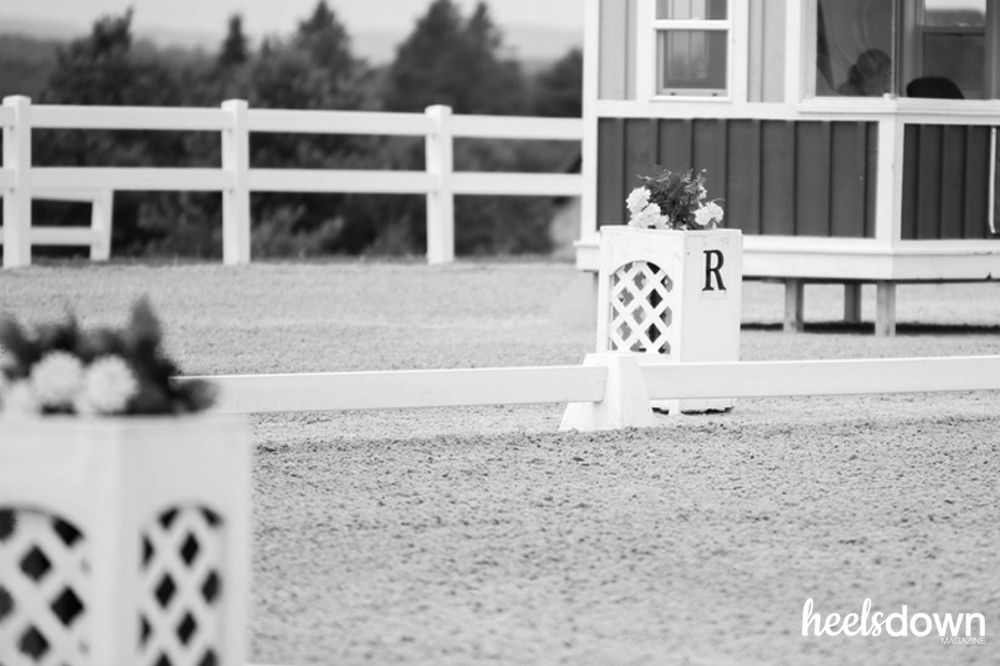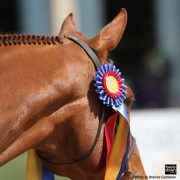Dressage Takeaways From A Clinic With Sue Kolstad

On a blustery but warm Florida day, I was fortunate to audit a clinic with USDF Gold Medallist and S-Rated Judge Sue Kolstad at the lovely Royal Blue Stables in Odessa, Fla. For a few days Sue spent time working with individual riders and horses at various training levels.
While I didn’t ride in the clinic, I learned a ton from just being an observer, absorbing Sue’s wisdom and expertise. Here are a few takeaways from watching Sue work with green horses, young riders, experienced riders and skilled, well-bred horses.
The Whip Is Not An Aid
At the beginning of a session with a Third Level rider and horse pair, Sue was quick to correct the rider when she asked her horse to walk off with the tap of a whip instead of with her leg first. “The whip is not an aid,” Sue explained. Every ask should come from the leg and seat first, and then the crop if the horse doesn’t respond promptly. The true aids are, Sue said, leg, seat and hand.
A Balanced Seat Will Vary, Depending On The Horse
While the same rider and horse pair practiced shoulder-in along the quarter-line, Sue helped coach the rider on finding her balance in the saddle in order to move with the horse’s rhythm. Sue talked about how top judges and riders have different takes on where to find the most “balanced” position in the saddle, but to her, it depends on the horse. The rider must find the appropriate place within their own seat that allows them to move with the horse and not against it, and that “place” can change depending on the horse and his way of going. The best riders are adaptable ones, who can read what each individual horse needs and go with it.
Don’t Be Afraid To Use Your Body
The name of the game isn’t equitation. While any rider should strive to create a nice-looking overall and correct riding position, you have to use your body in order to effectively ride the horse. Don’t be afraid to turn your shoulders, use your hips, move your hands, ankles and arms. Riding too stiff will encourage your horse to also be stiff or to lean against you. Moving with the motion (like in the blurb above) and using your body encourages that fluid, harmonious connection we’re all striving for.
A Horse Won’t Stay In Balance Without You
It is quite literally impossible for a rider to hold a horse up. Even though the horse may convince you otherwise, joked Sue. Finding that balance is a constantly moving target that a rider must always be finessing in order to achieve. But that balance is not a finite thing – once achieved, it must be maintained. For example, Sue placed a whip on the ground and used her hands to keep it erect and upright. Gravity, of course, would pull the whip down eventually. If Sue wasn’t paying attention, and stopped pushing the whip back up into place, it would fall to the ground. It’s the same when maintaining that balance in the saddle – it requires constant half-halts and leg – minor course corrections – to keep it.
Don’t Forget To Take Off The Pressure
When learning something new in the saddle, like a half-pass or even half-steps, it’s easy to forget to release the pressure. This can be achieved simply by pushing your hands forward during the work, and allowing your horse a moment to take a breath. There’s no need for constant pressure, of course, but it’s something every rider can forget while in the moment, Sue explained. Those moments of release help create the softness in the movement you’re trying to achieve, outside of being kind to the horse.


